The decibel is a relative unit of measurement equal to one tenth of a bel (B). It expresses the ratio of two values of a power or root-power quantity on a logarithmic scale. Two signals whose levels differ by one decibel have a power ratio of 101/10 or root-power ratio of 101/20.

Relative density, also called specific gravity, is a dimensionless quantity defined as the ratio of the density of a substance to the density of a given reference material. Specific gravity for solids and liquids is nearly always measured with respect to water at its densest ; for gases, the reference is air at room temperature. The term "relative density" is preferred in SI, whereas the term "specific gravity" is gradually being abandoned.

In celestial mechanics, escape velocity or escape speed is the minimum speed needed for an object to escape from contact with or orbit of a primary body, assuming:

Humidity is the concentration of water vapor present in the air. Water vapor, the gaseous state of water, is generally invisible to the human eye. Humidity indicates the likelihood for precipitation, dew, or fog to be present.
Galilean invariance or Galilean relativity states that the laws of motion are the same in all inertial frames of reference. Galileo Galilei first described this principle in 1632 in his Dialogue Concerning the Two Chief World Systems using the example of a ship travelling at constant velocity, without rocking, on a smooth sea; any observer below the deck would not be able to tell whether the ship was moving or stationary.

The Karabair is a long-established horse breed from Central Asia, and particularly from Uzbekistan and northern Tajikistan. It results from the cross-breeding of desert horses of Arabian or Turkmene type from the south with steppe horses from the north. It is a small, agile and versatile horse that can be used for riding or driving. It is well suited to local horse sports, and especially to the Uzbek national game, kokpar. It is also used for meat and milk production; the milk may be made into kumis.

Danatinia is an extinct genus of lamprid fish from the Eocene. It contains a single species, D. casca from Danata Formation Lagerstatten, of the earliest Ypresian of Turkmenistan. It was first named by Daniltshenko in 1968.
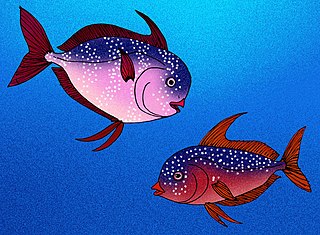
Turkmenidae is an extinct family of lamprids from the Paleogene of the west-central Asia, in what was formerly the Peri-Tethys Ocean. They were small, disk-shaped fish that bore a strong resemblance to their closest living relatives, the opahs.

Velocity is the speed in combination with the direction of motion of an object. Velocity is a fundamental concept in kinematics, the branch of classical mechanics that describes the motion of bodies.
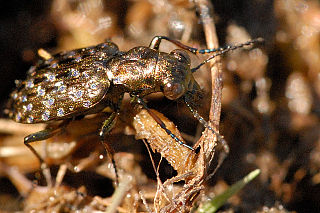
Elaphrus is a genus in the beetle family Carabidae. There are at least 40 described species in Elaphrus.
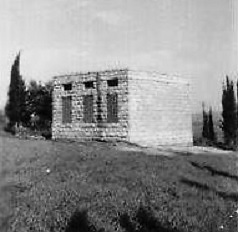
Abu Zurayq is a cluster of archaeological sites at a well-watered spot at the western edge of the Jezreel Valley and its transition to the Menashe Heights, next to Highway 66, between the modern kibbutzim of HaZore'a and Mishmar HaEmek.
Ulug Depe is an ancient Bronze Age site in the foothills of the Kopet Dag Mountains in the Karakum Desert of Kaka District (Kaahka) in the Ahal Province of south-eastern Turkmenistan. It covers around 13 hectares and lies on a mound at a height of about 30 meters, displaying the longest stratigraphic sequence of Central Asia, from the Late Neolithic, represented by Jeitun culture, until the pre-Achaemenid period.
Elaphrus finitimus is a species of ground beetle in the subfamily Elaphrinae. It was described by Casey in 1920.
Saurenchelys finitima, also known as the Whitsunday wire eel is a species of eel in the family Nettastomatidae. It was described by Gilbert Percy Whitley in 1935, originally under the genus Chlopsis. It is a marine, tropical eel which is endemic to Australia, in the western Pacific Ocean.

Tomares romanovi, or Romanoff's hairstreak, is a butterfly of the family Lycaenidae. It is found in Armenia, Azerbaijan, Georgia, eastern Turkey, northern Iran, and Kopet Dagh mountains.
Episolder is a monotypic genus of Asian dwarf spiders containing the single species, Episolder finitimus. It was first described by A. V. Tanasevitch in 1996, and has only been found in Russia.
Scirites is a genus of North American sheet weavers that was first described by S. C. Bishop & C. R. Crosby in 1938. As of May 2019 it contains only two species: S. finitimus and S. pectinatus.
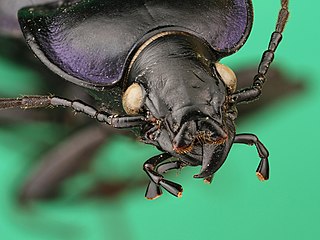
Carabus finitimus is a bluish-coloured species of beetle in the family Carabidae. It is found in continental United States.
Agkistrocerus finitimus is a species of horse flies in the family Tabanidae.
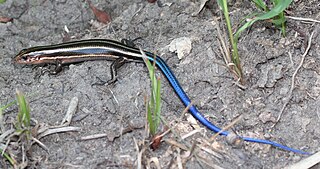
Plestiodon finitimus, the Far Eastern skink, is a species of lizard which is endemic to Japan and Russia.
This page is based on this
Wikipedia article Text is available under the
CC BY-SA 4.0 license; additional terms may apply.
Images, videos and audio are available under their respective licenses.












